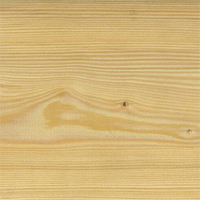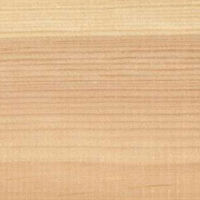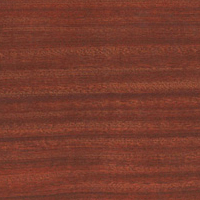Timber Types Explained
Softwood
 Larch
Larch
A well-liked softwood, Larch is durable, fairly flexible, tough and waterproof. Many field gates are made in Larch as they are often more durable than Redwood. Larch does not plane up as smoothly as other softwoods and a “ragged” effect is one of its features.
 Redwood
Redwood
Redwood is a more decorative species of softwood. It planes up much more smoothly than Larch and offers a nicer finish, that stains well.
Hardwood
 Sapele
Sapele
A dark hardwood. It is well suited to joinery and general construction and is regularly used in furniture.
Hardwood and Softwood Timber Types
When it comes to construction, furniture making, or any woodworking project, understanding the different types of timber is essential. The two primary categories of timber are hardwood and softwood. Each type has its unique characteristics, uses, and benefits. In this blog post, we will delve into the differences between hardwood and softwood timber types, their applications, and why they matter for your projects.
What is Hardwood?
Hardwood comes from deciduous trees that lose their leaves annually. These trees typically grow slower than softwoods, resulting in denser wood that is often more durable. Common examples of hardwood species include oak, maple, cherry, and walnut.
Characteristics of Hardwood
- Density: Hardwoods tend to be denser than softwoods due to their slower growth rate. This density contributes to their strength and durability.
- Grain Patterns: Hardwoods often feature intricate grain patterns that can add aesthetic appeal to furniture and flooring.
- Durability: Many hardwoods are resistant to wear and tear, making them ideal for high-traffic areas or heavy-use items like furniture.
- Cost: Generally speaking, hardwoods are more expensive than softwoods due to their scarcity and longer growth periods.
Common Uses of Hardwood
Hardwood is widely used in various applications due to its durability and aesthetic qualities:
- Furniture Making: High-quality furniture pieces like tables, chairs, and cabinets are often made from hardwoods due to their strength and beauty.
- Flooring: Many homeowners prefer hardwood flooring for its elegance and longevity.
- Cabinetry: Custom cabinets made from hardwood can enhance the look of kitchens or bathrooms.
- Musical Instruments: Certain hardwoods are preferred for making musical instruments because of their acoustic properties.
What is Softwood?
Softwood comes from coniferous trees that typically remain evergreen throughout the year. These trees grow faster than deciduous trees, resulting in lighter wood that is generally less dense than hardwoods. Common examples of softwood species include pine, spruce, cedar, and fir.
Characteristics of Softwood
- Lightweight: Softwoods are usually lighter than hardwoods due to their lower density.
- Straight Grain: Softwoods often have a straight grain pattern which makes them easier to work with during construction.
- Cost-effective: Generally more affordable than hardwoods because they grow faster and are more abundant.
- Versatility: Softwoods can be used in a wide range of applications from structural framing to decorative elements.
Common Uses of Softwood
Softwoods have a variety of uses across different industries:
- Construction: Softwoods like pine are commonly used for structural framing in buildings due to their strength-to-weight ratio.
- Paper Production: Many paper products come from softwood trees because they produce long fibres that create stronger paper.
- Fencing Materials: Empress Fencing Clitheroe often utilises softwoods for fencing solutions as they provide a cost-effective option without compromising on quality.
- Outdoor Projects: Decking materials made from treated softwood can withstand outdoor conditions while being budget-friendly.
Comparing Hardwood vs Softwood Timber Types
Understanding the differences between these two timber types can help you make informed decisions based on your specific needs:
| Feature | Hardwood | Softwood |
|---|---|---|
| Density | Denser | Lighter |
| Growth Rate | Slower | Faster |
| Cost | More expensive | More affordable |
| Durability | Highly durable | Less durable |
| Aesthetic Appeal | Intricate grain patterns | Straight grain patterns |
Choosing the Right Timber Type for Your Project
When deciding between hardwood and softwood for your project at Empress Fencing Clitheroe or elsewhere, consider the following factors:
- Purpose: What will you be using the timber for? If you need something strong for structural support or high-end furniture pieces, go with hardwood; if you’re looking at fencing or general construction work where cost matters more than aesthetics or longevity—softwood may be your best bet.
- Budget: Hardwood tends to be pricier; if you’re working within a tight budget but still want quality materials—softwoods offer excellent value without sacrificing too much on performance.
- Aesthetic Preference: If visual appeal is crucial (like in custom cabinetry), then opt for beautiful grains found in various hardwood species.
- Environmental Considerations: Always check whether the timber you choose is sustainably sourced; both types can come from responsibly managed forests if sourced correctly.
Understanding the differences between hardwood and softwood timber types allows you to make informed choices tailored specifically towards your project needs—be it fencing solutions at Empress Fencing Clitheroe or any other woodworking endeavour! Each type has its strengths; knowing when each one shines will ensure successful outcomes every time! Whether you’re building a sturdy fence with quality materials or crafting exquisite furniture pieces—timber selection plays an integral role in achieving lasting results!


 Larch
Larch Redwood
Redwood Sapele
Sapele